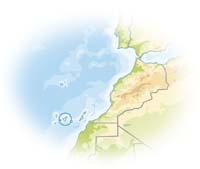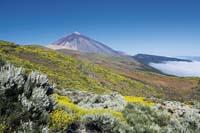Teide

On the island of Tenerife, the Teide volcano rises 3,718 meters above the sea. Under the sea it has more than 7,000 meters. It is the third largest volcano in the world, behind Mauna Loa and Mauna Ke in Hawaii. The Guanches, the Canarian aborigines, called him Etxebide and for them it was the house of the forces of evil.
Since 1954, Teide is the national park, one of the most visited in Europe. It includes numerous landscapes: pine forests that grow between black or red ashes, slopes covered with flowering shrubs, dry rocky areas that look like moles, fields of bright black basalts, seas of fog, lava tabs, rusty stone stacks and, in the center of everything, the pointed Teide ridge, with its unmistakable silhouette.

The park is a magnificent showcase of the geological processes of a mature volcanic system. And it has a rich and unique flora, of the 168 species 58 are endemic. Among them are the red tajinaste ( Echium wildpretii) and the violet of the Teide ( Viola cheiranthyfolia), of more than 2,400 m. As for the fauna, highlights the blue txonta that inhabits the pine forests of the park ( Fringilla teydea).
Buletina
Bidali zure helbide elektronikoa eta jaso asteroko buletina zure sarrera-ontzian











